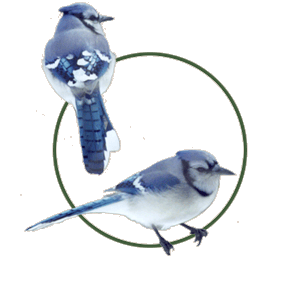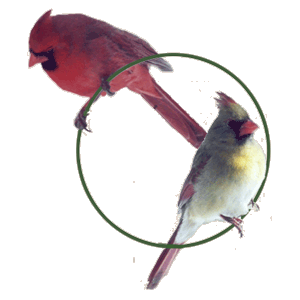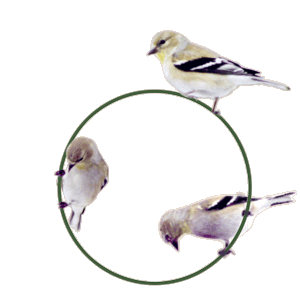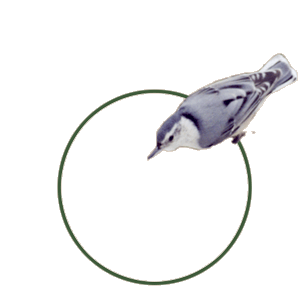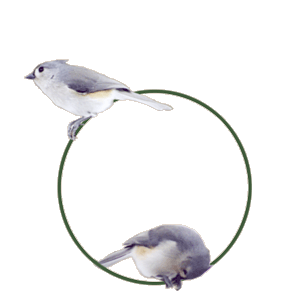 |
|
| Birds Native Animals of North Jersey |
|
| Scenery • Geography • Maps • Bears • Birds • Recreation |
|
|||||||||||||||||||||
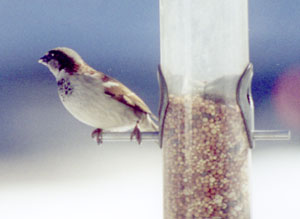
New Jersey's diverse habitats attract hundreds of different species of birds. From the ocean and saltwater marshes of the coast to the pine and hardwood forests of the north, millions of birds make a home or at least a brief migratory stopover in New Jersey. Northern New Jersey is particularly interesting due to the many different ecoregions found there.
In the Northeastern coastal plain are the meadowlands , a brackish, swampy area, where egrets, Great Blue Herons and many other wading birds thrive. Rare birds to the northeast are found here such as the American Avocet. Traveling westward, Sparrows and House Finches rule the roost of the suburban, bedroom communities. In the Northwest corner of New Jersey, Chickadees and Tufted Titmouse are very common through the forests and farmland.
Some archeologists believe birds to be the descendants of dinosaurs. One of the best ways to find out which birds are in your area is to set up an outdoor bird feeder. Different birds can be attracted by experimenting with the types and mixtures of seed you fill your bird feeder. Smaller birds are attracted to millet and hemp seed while larger birds such as Blue Jays and Cardinals prefer safflower and sunflower seeds.
Squirrels also like seed and can eat quite a bit in a short time. Squirrels can destroy a birdfeeder in minutes that is not sturdy enough. Many types of squirrel deterrents are available including seed with cayenne pepper. Squirrels will avoid seed with cayenne pepper, but birds are not affected by it. Another type of shield is a domed physical barrier placed on top of the feeder. Other squirrel shields include a metal cage around the feeder or weight sensitive doors which close the feeder when a squirrel triggers the mechanism. Common Birdfeeder Visitors
Blue
Jay With their sharp, black beaks and apparent aggressiveness, Blue Jays can dominate the birdfeeder when they arrive. Blue Jays are attracted by Sunflower and Safflower seed. Blue Jays are omnivores and their diet ranges from acorns and sunflower seeds to frogs and snails. They often visit feeders in search of suet and birdseed and are fond of bathing in birdbaths. Nests are built in the crotch of a tree and are rather bulky and made of leaves, dry grasses, and bark. The breeding season occurs from April to July and the female lays 3-5 eggs which are olive or pale green and spotted with brown and gray*. Blue Jays are in the family Corvidae, along with crows and magpies, and are very clever birds. Experiments with captive birds have shown that they are capable of counting, are good at solving puzzles, and quickly learn to associate noises and symbols with food*.
Northern
Cardinal
Cardinals are usually thought of as being bright red birds, but females and young are noticeably different. The female is a brown/brown gold with red on the wing tips, tail and tip of the crest. An adult male Cardinal is a bright red crested bird. They both share a heavy, orange bill with a black mask from the base of bill to the eyes. A juvenile Cardinal is similar to the female but lacks the black mask, the red at the tip of the crest, and has a darker, almost black bill. Adult Cardinals are slightly smaller than Blue Jays at about 9 inches (~20 cm) in length. Cardinals have an unusual trait in that both male and female have birdsong. In most temperate climate bird species, only the male sings. Another interesting fact is that the female cardinals appear to learn more songs faster than males.** Cardinals share the same family as finches and can be attracted to bird feeders with Sunflower and Safflower seed mixes.
Black-Capped
Chickadee
Black-Capped Chickadees are common visitors to birdfeeders and are attracted by sunflower seeds and suet. Chickadees forage over twigs and under tree bark for insect eggs, ants, beetles and caterpillars. They will also eat wild fruit. Chickadees are in the same family as Tufted Titmouse (see below). Chickadees are usually no larger than four to five inches; small, curious, and relatively tame. The Chickadee is white breasted with gray wings and long grey tail having a distinctive black "cap" and "bib". Chickadees travel in gangs, so if you see one at your birdfeeder, there are probably more lurking nearby. Chickadees and other members of their family are very acrobatic and can put on quite a show. The call of the Black-capped Chickadee is one of the most complex vocalizations in the animal kingdom. Depending on slight variations in the phrases, the call can convey separate, unique messages: in addition to acting as a contact call or as an alarm call, chickadees also use their call to relay information about an individual's identity or to indicate that they recognize a particular flock. These birds are cavity nesters, meaning they utilize a hollow of a rotting tree to lay their 5-7 white eggs that are dotted with brown*.
American
Goldfinch
During the spring and summer months, the male Goldfinch is immediately recognizable by it's bright yellow color with black wings. During the winter months, the Goldfinch loses it's bright colors but is still easy to identify by it's black wings with white bars. The female is olive-yellow and lacks a black cap. The Goldfinches' distinctive colors give it the nickname "wild canary". Finches belong to the family Fringillidae, taken from the Latin word fringilla, meaning "small bird". These birds are seed eaters and Some of their preferred seeds include thistle, golden rod, and sunflower. Goldfinches live together in flocks. The goldfinch builds a typical cup-shaped nest of tightly woven materials which is attached to a small twig. The female lays 4-5 unmarked, pale blue eggs*.
White
Breasted
Nuthatch
The Nuthatch is quite an acrobat and can spotted characteristically climbing down trees headfirst. Males and females are similar, although the male has a darker cap on it's head. The white-breasted nuthatch is 5-6 inches long with a wingspan of 10 inches. Nuthatches range throughout most of North America and feed on insects, seed and nuts. They can be attracted by sunflower seeds and suet. Nuthatches spend most of their time in large trees or woodlots eating insects in the spring and summer and nuts such as acorns and sunflowers in the fall and winter*. They nest in natural tree cavities at least 15 feet above the ground. Nuthatches lay 5-8 white eggs marked with brown, red, purple, or gray. The White-breasted Nuthatch exhibits an unusual behavior referred to as "bill sweeping." This bird will pick up an insect, a piece of fur, or a piece of vegetation in its bill and sweep the bark around its nest cavity. The purpose may be to mask its own scent around the nest preventing detection by predators, such as squirrels.
Tufted
Titmouse
The Tufted Titmouse is a relative of the Chickadee and, like the Chickadee, travels in little gangs or bands of five or six birds. Titmice also share the mouse-gray body, but differ in having a crest, not the black cap of the chickadee. Titmice feed on insects and berries as well as seeds. The Tufted Titmouse often chases away birds that are the same size or smaller at feeders. During the winter, the titmouse hides food in tree bark crevasses.
|
Home • Scenery • History • Recreation • Home & Garden • Directory • Calendar • Classified Ads
• Maps • Scenery • Shopping
Advertise on rt23.com!
• Link to rt23.com!

Questions, comments, corrections? contact the Webmaster
©1999-2008 Ardan Scientific Programming, L.L.C.
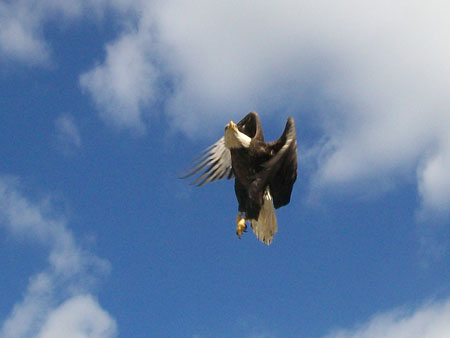 Bald Eagle Rehabilitation
Bald Eagle Rehabilitation